
Water News
Water2Drink Blog > Water NewsDoes Your Local School Serve Toxic Water?Thursday, February 19, 2015 - Posted by Water2Drink, in Health, Water News, Products, Water Safety
California has myriad water woes, and here’s another one to
consider. Seven years ago, the local
NBC4 I-Team investigated Los Angeles area schools that had children drinking
from potentially unsafe water fountains.
The schools had old fountains and pipes made with lead that leached into
the drinking water. Today, thousands of
schoolchildren in L.A. are still drinking from these fountains. The NBC4 story states the Los Angeles Unified School District
(#LAUSD) would solve the problem by having the water lines to each fountain
flushed daily, running the water for a minimum of 30 seconds at the beginning
of each school day. The schools were to
keep logs for proof that the lines were flushed. But a 2013 audit report says one #school was
found to have falsified the logs, and an additional six schools claimed they
had followed the policy but in fact hadn’t.
Lead leaching from older pipes and fixtures is a chronic
problem in older buildings like schools, and this problem can occur in any
school district in the country. The problem is exacerbated when communities use
chloramine to disinfect their water, which accelerates #lead leaching. Chloramine is a disinfectant that is
formed by mixing chlorine with ammonia.
It is a less effective disinfectant than chlorine, but is longer lasting
and stays in the water system as it is transported to the point of use.
The solution? Carry fresh, filtered water from home, using a
Multipure Drinking Water System from Water2Drink. The #Multipure family of drinking water
systems are all tested and certified to reduce #chloramine, along with dozens
of other contaminants, metals, PCBs, and cysts.
Using a Multipure system for your drinking water costs just $.09 cents a
gallon, and provides assurance that you are using a superior water filter in
removing or reducing the highest number of contaminants. Water2Drink.com is
happy to answer your questions about choosing the best #waterfilter for your
family’s needs. |
 0 Comments 0 CommentsTweet |
What Are Your Drinking Water Standards?Friday, February 13, 2015 - Posted by Water2Drink, in Health, Water News, Water Safety
If your community water system violates drinking water
standards, do you trust them when they say “there is nothing you need to do?” Recently, the town of Wrightsville Beach, NC, experienced a
violation of the drinking water standard for #trihalomethanes. While the public notice indicates this is not
an emergency, it goes on to list the possible health risks associated with the
liver, kidneys, and central nervous system, including #cancer.
The town is working with the NC Department of Environment
and Natural Resources (NCDENR) to bring the contaminant concentration down and
into compliance, and that they “anticipate improvements within three months.” The
notice also says the public doesn’t need to boil water or take other corrective
actions. But during that three-month
period, and for potentially longer, the public is still exposed to
trihalomethanes in their drinking water.
If this happened to your water supply, are you willing to risk your
health for three months?
The only way to ensure your health and the safety of your
drinking water is to be proactive. Using
a Multipure Drinking Water System allows you to be in control of the quality of
your water source. The Multipure family
of filtration products are NSF-certified to reduce trihalomethanes, the
offending contaminant, along with dozens of other #contaminants, cysts, and
heavy metals.
Water2Drink believes the consumer should know exactly what
contaminants are reduced by using a #Multipure product. On our website, Water2Drink.com, we have
provided links on each product page to the description, features,
documentation, specifications, and “What’s in the Box.” Simply click on the Products link on our
homepage, then click the drinking water system you are researching. You will find the Performance Data Sheet
listed under the “Documentation” tab.
You can’t always trust the water source, but you can trust your
Multipure Drinking Water System.
|
 0 Comments 0 CommentsTweet |
The True Cost of WaterFriday, February 6, 2015 - Posted by Water2Drink, in Water News
If you are purchasing bottled water for convenience, have
you considered the true cost of that choice? Bottled water companies spend millions in advertising to
convince you that their product is the purest and most healthful available. But bottled water is not well regulated or
safer than tap water. More than 25% of
bottled water comes from municipal (public) supplies, and bottlers are not
required to list the water source on the label. This means your bottled water
could have come from a well located near a hazardous waste site. It also may
contain chemicals that leach from the plastic bottle, in addition to other
unknown contaminants present in the water source.
Buying bottled water means you often pay much more per
gallon than you pay for gasoline. A
recent search of prices at Walmart revealed one popular brand of bottled water costs $3.73 per gallon. If buying in
bulk at a big box store such as Costco, you could pay $1.56 or more per
gallon. And buying for single use (i.e.,
from a hotel minibar or convenience store) can be more than $10 per
gallon. When you look at the actual cost
per gallon, the true cost of #bottledwater is exorbitant.
Also, the environmental cost of the massive consumption of
bottled water is extreme. Bottles can
take over 1,000 years to bio-degrade and, if incinerated, they produce toxic
fumes, states The Water Project’s website.
Water bottles provide limited recycling opportunities, because only
certain types can be recycled. Only one
out of five bottles are sent to the recycle bin, says The Water Project.
So what is the most practical solution? Carry and drink your own filtered tap
water. Purchasing and using a
high-quality, low maintenance water filtration system such a Multipure Drinking
Water System will provide you the freshest, most convenient water source
possible. Owning a #Multipure drinking
water system will give you delicious, clean water for only $.09 per
gallon. This is almost 48 times less
expensive than imported bottled water.
Having your own certified water filtration system allows you to be in
control of the water you ingest. It also
eliminates the environmental impact of both the manufacturing and disposal of
all those plastic bottles. |
 0 Comments 0 CommentsTweet |
Finding What You Need to KnowWednesday, January 14, 2015 - Posted by Water2Drink, in Water News, Products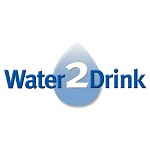
Recently, we received feedback from our customer, D.
Dixon, about our website: “I'm really liking your website. Full of great
information, especially the links to the EWG water quality data and the cross
reference to filters by chemicals treated.”
Today, Water2Drink would like to highlight some features of our website
that may help you with your water filtration purchase.
Our website, Water2Drink.com, is full of useful information
regarding the entire Multipure family of water filtration systems. We believe that this information is critical
for our customers to become better educated on how Multipure’s solid carbon
block filter is superior to other technologies on the market. We encourage our customers to explore our
website in depth to learn how and why the #Multipure products are so highly
effective at #contaminant reduction.
Thanks to our customer, D. Dixon, here are a few
suggestions on where to begin:
EWG U.S. Tap Water Quality Database. This link (under “Useful Links” on the bottom
of our home page) takes you to the Environmental Working Group’s National
Drinking Water Database. On this page,
you can enter your zip code and/or your water company’s name, and the Database
will provide the results of testing done by the water company. It will specifically list the contaminants
that exceed health guidelines in your own water supply. Knowing this
information, you can use our Detailed Product Information link (described
below) to pinpoint the #water filtration system that will best meet your needs.
Detailed product information. We provide a link to
every Multipure product’s Specification Sheet (describing benefits, features
and specifications), Performance Data Sheet (providing the list of contaminants
reduced), and Owner’s Manual (including Warranty, Installation, Operation and
Maintenance information). These links
are located under “Product Manuals” in our Resource Center, and are especially helpful
in determining which system will address your specific needs. They also provide advance information for
your plumber or installer, should they have any hardware, fittings, or installation
questions. The Multipure Challenge. This link is located in our Resource Center,
under the “How a Multipure Water Filter Works” tab. The Multipure Challenge is a cross reference
list of common, harmful contaminants and the filter technologies that address
them. Only Multipure’s solid carbon
block filtration system effectively reduces all contaminants, while not
eliminating the naturally occurring, healthful dissolved minerals. |
 0 Comments 0 CommentsTweet |
Improving America's Drinking Water SystemsMonday, December 29, 2014 - Posted by Water2Drink, in Water News, Water Safety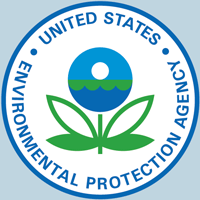
While many citizens may see the Environmental Protection
Agency (EPA) as a “watchdog” agency for American waterways, the EPA also researches
ways to improve our national drinking water systems. An EPA news release in September, 2014 announced the #EPA is
providing funding to create “Drinking Water Innovation Centers.” According to the release, “These centers will
help to develop innovative and practical solutions for challenges faced by
smaller drinking water systems, which make up the majority of public water
systems in the United States.”
Of the nation’s approximate 160,000 public water systems,
about 97% of them service fewer than 10,000 people each. These water systems
face many obstacles, such as limited funding, aging structures, and the cost of
complying with new regulations. The
newly funded centers will help bolster these systems’ capacities and
capabilities to provide #water throughout the country.
The recipients of the funding are the University of #Colorado
Boulder’s Design of Risk Reducing, Innovative Implementable Small System
Knowledge (DeRISK) Center, and the University of #Massachusetts Amherst’s Water
Innovation Network for Sustainable Small Systems (WINSSS) Center. “These organizations are leading the way in
developing cutting-edge technologies,” according to the EPA news release. |
 0 Comments 0 CommentsTweet |
Is It Safe to Drink the Water?Friday, December 19, 2014 - Posted by Water2Drink, in Health, Water News
If you are living in the United States, you probably have
never had to ask that question in any restaurant, private home, or business
setting. Most Americans believe that the
water pouring from their faucets is a reliable source of safe drinking water. Almost
no American has ever had to ask, is it safe to drink the water? Clean, safe public drinking water was not always so
available. Public water systems began to be established in the 1800’s, yet the
first standards for drinking water were not developed until 1914, and even then
the standards only applied to interstate common carriers such as trains, buses,
and ships. A comprehensive article by Professor
James Salzman and published by Slate.com states, “In historic terms, the
assumption of safe drinking water is a very recent development.” What we now
consider safe, uniform drinking water
standards weren’t actually put into place until the Clean Water Act of 1972,
and with the passage of the Safe Drinking Water Act (SDWA) of 1974.
However, while these measures certainly deserve recognition,
there are still significant challenges ahead for public drinking water delivery
systems. The Environmental Protection Agency has estimated $384 billion in
infrastructure needs ahead to replace aging water mains, which date back to the
1860’s. The SDWA is also faced with “emerging contaminants,” by-products of our
modern lifestyle. Newly recognized contaminants from medications, personal care
products, and components that act like hormones were unimaginable when our
water treatment systems were designed.
Even new contaminants introduced by hydraulic #fracking have not yet been
addressed. Therefore, these polluted fluids and #contaminants are not now being addressed
by municipal treatment plants.
These infrastructure changes will take incredible amounts of
effort, time and money. Don’t wait for
the public infrastructure to “catch up” to what is happening today. Get ahead
of these potential health hazards and filter your own water at the point of use. #Water2Drink recommends industry-leader Multipure
International as the high-quality, reasonable-cost manufacturer. As these newly emerging contaminants affect
our water supply, Multipure is constantly pursuing improvements to their solid
carbon block filter to address these concerns. Water2Drink.com is here to help
you decide which filter will provide the protection you need. |
 0 Comments 0 CommentsTweet |
Are You Affected by Storm Events?Friday, December 12, 2014 - Posted by Water2Drink, in Water News
This week, the U.S. Pacific coast has been dealing with
severe storms in California, Oregon and Washington, while the East Coast has been
hammered by winter storm #Damon. While you may have been unaffected by these particular
storms, across the globe we see evidence of climate change that may directly impact
you in the future.
According to the article “Thirsty
for Answers: Preparing for the Water-related Impacts of Climate Change in
American Cities” on the Natural Resources Defense Council website, cities
across our country “face significant vulnerabilities due to climate change,
ranging from water shortages to more intense storms and floods to sea level
rise.” The NRDC believes that action at
the local level is going to be the most effective way to reduce or prevent
these effects. The NRDC compiled
research on 12 U.S. cities, and has prepared a sideshow to offer a glimpse of
some of the threats. Nearly all of the
cities show “water supply challenges” likely to occur as a result of
#climatechange.
You can help mitigate storm-related water contamination
issues by using a high quality point-of-use water filtration system in your
home and office. Water2Drink.com sells only Multipure’s Drinking Water Systems
that feature a solid carbon block technology with exceptional performance. The
Multipure family of products is NSF certified to reduce a wide array of
contaminants, including disinfection byproducts and gasoline additives. These contaminants can get into water sources
through storm events, pollution or erosion. |
 0 Comments 0 CommentsTweet |
How Does Your Water Taste?Friday, December 5, 2014 - Posted by Water2Drink, in Water News, Water Safety
Recently, residents of Abilene, #Texas, have noticed an
unusual taste and/or odor in their drinking water. KTXS12 News reports that, in the city’s news
release, the City of Abilene says, “the water is safe to drink.” If you noticed an unusual taste or odor in your
local drinking water, would you be reassured by that statement?
According to the news release from the City of #Abilene, the
Water Department staff is experimenting with various solutions to solve the
problem, including using “additional treatment chemicals to address the issue.” While we all have heard that Everything Is Bigger In Texas, is putting
more chemicals into the water supply a good thing for consumer health?
The Environmental Protection Agency (EPA) sets water quality
standards for consumer protection. These
standards are for a minimum of public safety, and as a consumer you need
to ask yourself if minimum EPA standards are good enough for you and your
family. It should also be noted that the
EPA does not enforce #waterquality standards for taste or odor compounds that
do not pose a health risk to the public.
The safest, easiest solution is to use a high quality
point-of-use Multipure Drinking Water System.
Water2Drink.com sells only #Multipure Drinking Water Systems. We have found that Multipure’s unique solid carbon
block filter provides a wide range of #contaminant reduction that affects both
the healthfulness and the aesthetic properties (taste and odor) of water. Multipure is one of the few companies whose
products are tested and certified by NSF International to reduce such a wide
array of drinking water contaminants.
|
 0 Comments 0 CommentsTweet |
Is Your Filtered Water Cloudy?Friday, November 21, 2014 - Posted by Water2Drink, in Health, Water News, Products, Water Safety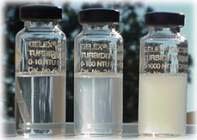
It’s that time of year again, when the snow is blowing, the
wind is howling, and your water is… cloudy? Probably the single most asked question we get in the wintertime
from our customers is, “Why is my filtered water cloudy?” Water can be cloudy for two reasons, one that
is benign and one that can be very bad.
The benign answer is:
it’s just air. If you are using a
high quality point-of-use water filter, such as a Multipure Drinking Water
System, you may be surprised to see cloudy or milky-looking water coming from your
filter. This most often occurs when the
water is cold (coming from cold ground water or being transported underground
through cold pipes). One of the
properties of water is its ability to dissolve gasses, including #air. Cold water is denser than warm water, and
therefore it is capable of holding more dissolved gasses. The cloudiness or milkiness is simply
dissolved air. You can test this by
filtering a glass of water and letting it set on the counter for a moment or
two. The cloudiness (air) will dissipate upwards from the bottom of the glass,
leaving a glass of clear filtered water.
Why is this not considered turbidity? Turbidity is the measure of relative clarity
of a liquid, or of how much material may be suspended in water and how that
material decreases the passage of light through the water. Turbidity refers to how clear water is, and
indicates the presence of total suspended solids. When solids are present in water, this
indicates the water is not clear of particulate matter, and these solids may
also be contaminants of great health concern. An article on Waterontheweb.org states, “turbidity
adds real costs to the treatment of surface water supplies used for drinking
water since the #turbidity must be virtually eliminated for effective
disinfection (usually by chlorine in a variety of forms) to occur. Particulates may also provide attachment
sites for heavy metals such as cadmium, mercury and lead, and many toxic
organic contaminants such as PCBs, PAHs and many pesticides.”
Of course, you must use a quality water filtration system such
as a #Multipure filter to remove particulates and contaminants. But just how does this filtration work? For contaminants having a physical size, the solid
carbon block filter provides mechanical filtration on a submicron level to
remove particulates and bad tastes. It
also employs electrokinetic adsorption to attract and control charged particles. Almost any carbon filter can reduce chlorine
and address taste and odor problems. The
Multipure solid carbon block technology goes well beyond aesthetic improvements
to remove the broadest array of #contaminants, including turbidity. Each product in the Multipure family is
provided with a Performance Data Sheet that details NSF’s product certification
data and contaminant reduction test results.
|
 5 Comments 5 CommentsTweet |
Should I Be Drinking Coconut Water?Friday, November 7, 2014 - Posted by Water2Drink, in Health, Water News
You can’t pick up a fitness magazine or read an online
article that doesn’t tout the benefits of coconut water. Even non-athletes buy into the claim that #coconutwater is full of electrolytes, potassium and other nutritional
benefits. But is it all just marketing? A recent article from Time.com asked the
experts, and four out of five agreed that there are other factors to
consider. Coconut water can have as much
sugar as a banana, even an unsweetened version, but have none of the beneficial
fiber.
Fluid loss during strenuous exercise is common, and can
result in stress, impaired cognition and cardiovascular function, increased
fatigue, and impaired #exercise performance. Following the recommendations for
fluid intake before, during, and after exercise is particularly important. But unless you are an elite #athlete,
carbohydrate/electrolyte sports drinks are not necessarily the beverage to
choose for rehydration. A 2012 study
funded by a coconut water manufacturer (Vita Coco) found little difference in
hydration after a workout by drinking water, coconut water, or a sports drink. On page 7 of the study, under “Results:
Performance Data,” the study concludes that “no significant difference… was
noted in total exercise time between bottled water… coconut water from
concentrate… and sport drink… .”
Fresh, clean water is the most suggested fluid for general
fitness enthusiasts. If you don’t want
to pay for expensive, exotic water from a coconut, we recommend a Multipure
water filtration system. Water2Drink.com
offers the entire #Multipure family of products, from the Aquamini travel
version, to the AquaRO, a full reverse osmosis system, and everything in
between, including the Aquaperform which reduces #arsenic as well. For just 9 cents a gallon, you can have
fresh, filtered water at your fingertips for post workout hydration, food
preparation, and ice. |
 0 Comments 0 CommentsTweet |
Chloramine and Your HealthSaturday, November 1, 2014 - Posted by Water2Drink, in Water News, Water Safety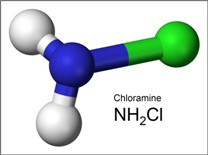
In the United States, Canada, and other first-world
countries, we are fortunate to have national and state regulations enacted to
protect our public water supplies. These
agencies, along with your local water provider, are tasked with delivering to the
public clean, disinfected water in order to prevent the spread of disease. The most common disinfectants used today are
chlorine and chloramine. While these
disinfectants are entirely necessary, even when used within federal regulation
guidelines, there still are serious health issues associated with routinely ingesting
such substances.
Chlorine is highly effective for the disinfection of water. However, challenges occur in the disinfection
process because chlorine can react with organic materials in the water,
especially from surface water sources. This
results in what is called “disinfection byproducts,” and these byproducts, such
as Trihalomethanes (TTHM), have been identified as #carcinogens and can lead to
serious illness.
Some water supply companies have made the switch from #chlorine
to chloramine. Chloramine (also referred
to as monochloramine) is a combination of chlorine and ammonia. While chloramine
is less likely to produce disinfection byproducts, it is a less effective
disinfectant than chlorine. It can also change
the chemical properties of water, which can foster corrosion and cause pipes to
leach lead and copper into the water.
Both chlorine and #chloramine are toxic to fish, aquatic
animals, reptiles, and amphibians. While
chlorine may dissipate from water if left to sit out for a few days, chloramine
cannot be removed in this manner.
Chloramine cannot be removed by either boiling or by the #distillation
process. In addition, chloramine vapors and disinfection byproducts can accumulate
in indoor air. The only effective way of
removing these disinfectants from your water is through point-of-use filtration
with a high quality carbon filter.
The Multipure family of water filtration systems reduces
chlorine and chloramine to the lowest possible levels, and these reductions are
tested and certified according to NSF/ANSI Standards. While many water filters on the market make
claims as to the reduction of disinfection chemicals and by-products, many are
not effective in reducing chloramine. You must insist on seeing #NSF testing and
certification of these claims. #Multipure
drinking water systems lead the industry in contaminant reduction, and this
includes the harsh chemicals used to disinfect your water.
|
 0 Comments 0 CommentsTweet |
Announcing: The Multipure Aqualuxe!Friday, October 24, 2014, in Water News, Products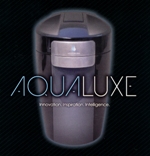
Last week, we talked about how to protect yourself from
waterborne microbial cysts. This week, the world of water filtration has a new Multipure
product to address current concerns about transmittable disease by #bacteria and viruses as well. At the Multipure 2014 PURE Annual Convention in Las Vegas,
NV, Multipure International introduced the Aqualuxe,
a bold, innovative departure from their other product families.
What makes this product exceptional? Here is what we believe
are the #Aqualuxe’s standout features:
We have not seen another product quite like this currently
on the market. The expected retail price is $1,080, and the replacement filter
cartridge is $150.
This is a remarkable departure from past products for
Multipure. They introduced this product concept several years ago to their
distributors, and #Multipure has been working hard to bring it to market ever
since. It’s exactly what is needed for communities that constantly receive
“boil water” alerts, which is happening with increasing frequency, or for
anyone who is concerned about the growing #contamination problem in our nation’s
water supply.
Multipure has the product on display at their company
headquarters, and a select few test marketers have an “ACE” beta version to
provide valuable feedback to Multipure. Multipure
is still in the process of obtaining NSF certifications and refining their manufacturing
and supply processes, and they estimate that the product will be ready to ship
in early 2015. In the meantime, Water2Drink.com
will soon be updating our website with this new product information, and you will
be able to register to be notified when the Aqualuxe becomes available.
|
 0 Comments 0 CommentsTweet |
Are You Exposed to PCE?Friday, October 10, 2014 - Posted by Water2Drink, in Health, Water News, Water Safety
A recent article in The
Washington Post brings to light a new example of neurotoxin exposure in the
environment. Tetrachloroethylene, or PCE, was used by New England’s water
utilities to line the insides of water pipes in the late 1960’s. PCE has been linked to increased risk for
stillbirths and other pregnancy complications. PCE is widely used in the
dry cleaning industry also, so it may be of concern for many other citizens as
well. The toxin has been linked to
mental illness, breast cancer risks, and some birth defects.
Unfortunately, PCE was not only found in the New England
area. Contamination has been found on military
bases across the country as well, along with water systems in Pennsylvania and
California.
There is a simple solution to address this problem: use a Multipure Drinking Water System at your
sink or point-of-use water supply to filter your drinking water. Multipure filters are NSF tested and
certified under NSF/ANSI Standard 53 Health Effects to reduce the widest array
of water contaminants of health concern of any filter on the market, including
PCE. You can find a confirming Performance Data Sheet on our Water2Drink website that will
give you the list of all contaminants that are addressed by using a Multipure
water filter.
If you would like to learn more about PCE, the Environmental
Protection Agency has information on their website as well. Click here for more information about health
effects and the EPA’s drinking water regulations.
|
 1 Comments 1 CommentsTweet |
The (Water) Fountain of YouthFriday, October 3, 2014 - Posted by Water2Drink, in Health, Water News
Your search for the elusive Fountain of Youth could be as
close as your kitchen sink. Water is a critical life element for our body. Our organs cannot function properly when the
body is not adequately hydrated, because water is taken from other places
within the body to combat dehydration. This can lead to sunken skin, increased
acne, and weakened muscles and joints.
A recent article on modernsalon.com includes a case study in
which the Daily Mail U.K. writer Sarah Smith asks, “What would happen if I
drank the recommended amount every day for a month?” The article includes a before and after
picture of Ms. Smith, who concluded she looked 10 years older in her before
picture. Dark under-eye shadows, blotches, and lackluster skin all disappeared
in just 30 days.
Are you looking for a healthy, easy way to look younger? What
would you be willing to do to take 10 years off your face? How about nourishing
your body with fresh, clean drinking water? We can help to provide the water if
you are willing to take the challenge. A Multipure water filtration system will
give you the healthy water you need for your challenge. The rest is up to you! Just drink the recommended 8 to 10 glasses of
water each day and see what happens. |
 0 Comments 0 CommentsTweet |
Continuing Education About Water QualityFriday, September 26, 2014 - Posted by Water2Drink, in Water News
If you are educating yourself about your water supply, and
want to know how the government is helping to protect you, we have new
information on our website that may assist you in your research. The Environmental Protection Agency (EPA) sets limits on the
levels of certain contaminants in drinking water. In addition to the limits, the EPA sets
testing schedules and methods of testing that water systems must follow. These are implemented by most states and
territories that oversee the water systems in their locations.
Water2Drink has added a link to the EPA document, "National
Primary Drinking Water Regulations," which serves as a useful summary of primary
and secondary drinking water regulations. This list also includes a description
of how each contaminant can negatively affect health and where the contaminant
comes from.
If you would like more information about the EPA’s current
drinking water regulations and what the regulations address, you can visit the “Current
Drinking Water Regulations” page on the EPA website for more information and
links.
|
 0 Comments 0 CommentsTweet |
How to Read Your Water ReportFriday, September 5, 2014 - Posted by Water2Drink, in Water News
Have you ever received a Consumer Confidence Report (CCR) from
your water utility? A CCR is a federally mandated annual report that every
water utility is required to publish.
Some utilities may not mail it to every household, but you have the right
to access the information as a consumer.
If you are not sure how to read your report, NSF (the public
safety and health organization) has an article that may help. The “What’s In Your Drinking Water” article
talks about what information is included in a CCR, and how to use the
information. Generally, the CCR contains
an overview, an explanation of abbreviations, and contaminant tables that list
which contaminants have been detected in the community water supply.
The NSF encourages people to use a home water treatment
device to address possible contaminants in your water supply. A variety of
products exist to treat drinking water, so you will want to do some research to
ensure you get a filtration system that meets your specific needs. “Because residential water treatment products
are not federally regulated, it’s important to verify that the system is tested and certified to
meet your specific contaminant reduction needs before purchasing,” says the NSF
article. #watercontamination #NSF #consumerconfidence #waterfilter
#Multipure #Water2Drink
|
 0 Comments 0 CommentsTweet |
Small Community, Big ProblemSaturday, August 23, 2014 - Posted by Water2Drink, in Water News, Water Safety
Recently, an article came across our desk about the water
quality in the small community of Wake Forest, NC. The 100+ homes in the neighborhood must
contend with discolored water that often contains sediment as well.
According to neighbor Wendy Callahan, “Some days we’ll get
relatively clear water, but you just don’t know until you turn on the tap.” President Tom Roberts of the water provider,
Aqua North Carolina, calls it an “aesthetic issue” that is not health-based.
"We try to treat the most sufficient way we can,"
Roberts said. "A lot of times that's by adding a sequestrant, which is an
additive that keeps it in suspension so it's invisible to the customers."
Sequestrant? Invisible? We looked up “sequestrant” and it
does not look very appetizing. Chemical #sequestrants are often used in treatment projects to remove contaminants that adversely
affect taste, odor, and color of drinking water. They do not remove, reduce, or solve the problem;
sequestrants appear to just mask the underlying contamination.
Obviously, this is a small water treatment facility serving
just over 100 homes, much like many smaller communities and towns across the
nation. Typically, small community water
utilities are inspected at some regular interval, but they simply do not have
funding to provide the optimal water filtration solution for you, their
customer. Adding a Multipure Drinking Water Filtration System would provide a
buffer to help protect consumers from ingesting many of the “irregularities”
that occur between inspections and maintenance cycles.
|
 0 Comments 0 CommentsTweet |
The 411 on NSF 401Thursday, August 14, 2014 - Posted by Water2Drink, in Water News, Water Safety
If you have done any research on water filtration systems,
you most likely know that the highest quality systems not only rely on
Environmental Protection Agency (EPA) standards, but also are tested to, and
certified against, NSF International standards. While there are myriad
contaminants that are reduced or eliminated by a certified filter, you may not
know that currently there is no EPA standard for emerging contaminants in
drinking water.
What are emerging contaminants? They are chemicals being discovered that
previously have not been detected, or are being detected at significantly
different levels than previously acceptable.
These include #pharmaceuticals, personal care products, pathogens, #hormones, #antimicrobials, veterinary drugs and feed additives. These chemicals can accumulate in human
tissue or blood, and are associated with health effects such as endocrine
disruption. The EPA has not been able to
create drinking water standards for these emerging compounds, as only recently chemists
have been able to measure trace amounts of the #contaminants present in public
water supplies.
But now the issue has been identified and #NSF is working to
develop a testing standard for emerging contaminants. A recent issue of Scientific American describes the issue in depth.
The new testing standard is identified as NSF Standard 401: Drinking Water
Treatment Units – Emerging Compounds/Incidental Contaminants. Since
this is a new unpublished standard and testing protocols have not been
finalized, no drinking water filter system can honestly promote that they are
in compliance with the new standard, including Multipure’s. However, Dr. Andrew
Fenwick, PhD, of Multipure International is actively working on NSF standards
committees to help finalize testing protocols. #Multipure will continue to be
on the forefront of product testing and standards compliance certification when
the new NSF Standard 401 is published. |
 0 Comments 0 CommentsTweet |
Water, Water, Everywhere!Friday, August 1, 2014 - Posted by Water2Drink, in Water News, Water Safety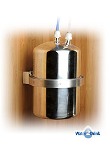
By now you have probably seen the news reports about the water
main break in Los Angeles, CA, on Wednesday, July 30th. TWENTY MILLION GALLONS were released into the
streets of the #UCLA campus. Sadly, those
20 million gallons of water were lost during the midst of California’s worst #drought in decades. What the headlines
didn’t shout was that the aging #watermain that burst was 93 years old. Warren G. Harding was inaugurated as the 29th
U.S. President in 1921 when that water line was laid and the U.S. formally
ended World War I in August of that same year.
That’s ancient! In fact, most of the pipes that supply drinking water across
the country were laid in during the first half of the 20th
century. For many cities, the greatest
population growth and urban expansion occurred from the late 1800’s into the
1920’s. As our water supply infrastructure
ages, ruptures like this will occur with increasing regularity. The concerning thing to note is that the
rupture occurred in the water line after the water left the treatment
facility. Why is this important to you?
Breaks like this happen all the time, anywhere between the
plant and our homes. There are 240,000
breaks a year, according to the National Association of Water Companies. These breaks can allow dirt and contaminants
into your #water supply after it has been treated but before it reaches your
home.
Fortunately, there is a solution. Citizens can protect themselves by using a
high quality “final barrier” point-of-use water filtration system like the
Multipure Aquaversa. The Aquaversa, with
its solid #carbon block filter technology, is considered to be the most
effective method in reducing a wide range of water contaminants of aesthetic
and health concern. To find out how to
protect your health and your family, contact #Water2Drink and we will help you determine
the right water filtration system for your needs. |
 0 Comments 0 CommentsTweet |
What Are You Willing to Pay to Eat?Friday, July 25, 2014 - Posted by Water2Drink, in Water News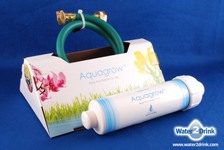
Even if you don’t live in California, you should be
concerned about California’s current drought situation. California’s $44.7 billion agriculture
industry is poised to take a big hit which will impact your food budget as you
shop for foods that are water-intensive to produce. Why does this matter to you? California is
the leading source of agriculture in the nation. The Huffington Post graphic, “Why California’s Drought Makes
Your Tomatoes So Expensive,” shows that one gallon of milk requires 880 gallons
of water to produce. A pound of
potatoes? 119 gallons of water. A loaf of bread requires 228 gallons. A pound
of beef requires a whopping 1,799 gallons of water to produce. Statistics like this are frightening. Some may decide to limit or eliminate beef
consumption. Others may explore options for fruits and vegetables closer to
home at their local farm stand instead of a grocery store. And as communities and states explore
alternatives for finding enough water for human consumption, the quality of water
sources may become questionable. Are you willing to get your hands dirty? An alternative to
buying fruits and vegetables that are grown in and shipped from drought-stricken
areas is to grow your own. And to
maintain the fertility of your garden’s ecosystem, consider adding a Multipure
Aquagrow dechlorinating filter to your garden.
The Aquagrow keeps your plants healthier by removing the chlorine that
kills beneficial microorganisms in your garden soil. |
 0 Comments 0 CommentsTweet |


